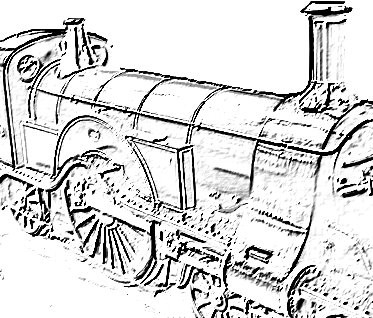The Diary of the Building of a 5" gauge Stirling Single |
|
|
|
|
|
|
|
Valve gear continued |
|
|
8th October 2017 I am now moving onto the lifting arm. The plan shows left and right handed arms but they are very similar and will be described just the once. |
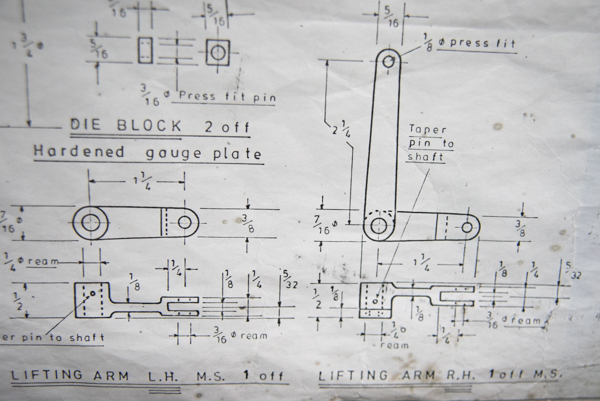 |
| First
both parts were coated with marking out blue and the locations
of the holes to be drill marked using and optical punch to
properly identify where the hole should be and then the laser,
shown in the photo, dot to align the drill to the location of
the centre pop. One hole was drilled and reamed 1/4" inch and the other 3/16" |
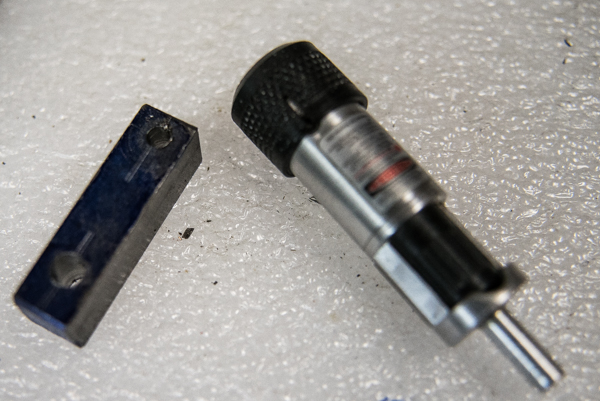 |
|
The slitting saw is the same one as used previously. The upper photo shows the cuts made and the lower photo more detail of the setting up. I used the same idea as previously used where by the hole was aligned with a bar suitably machined to fit and then the tool post tightened to ensure no lateral movement. All went well on the first piece and all went well on the second piece. I have decided that I must make up a wrench to be able to tighten the black nut part of the slitting saw arbour and occasionally the slitting saw slips as I am not using the key way ! |
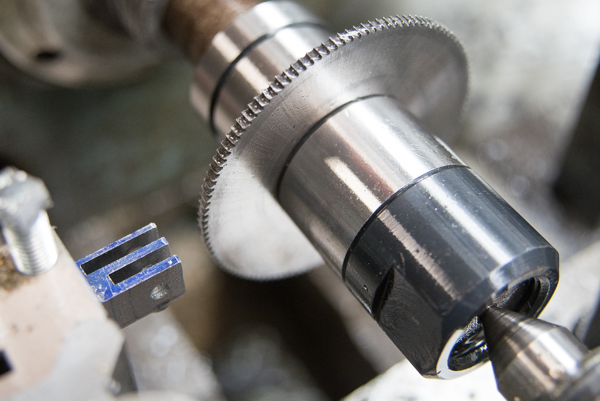 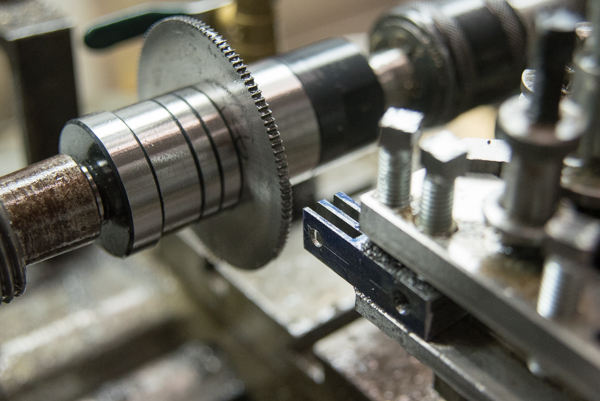 |
| 9th October 2017 The profiling of the lifting arms was carried out in the milling machine by bolting the parts with suitable spacers to avoid crushing the part. The photo shows the set up after one side had been milled proving the concept. The bolts used were 2BA through each hole. |
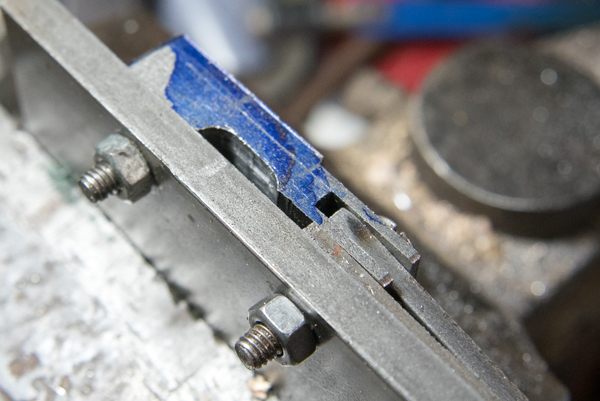 |
| This is the set up
in the mill with plenty of coolant being used and a single cut
the full depth of the piece taken in very small steps. |
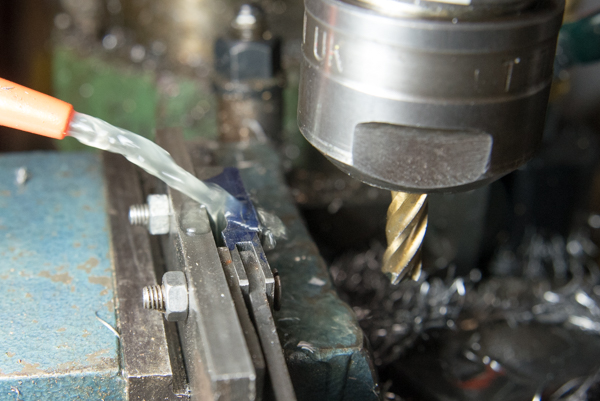 |
| The milling profiling
completed. |
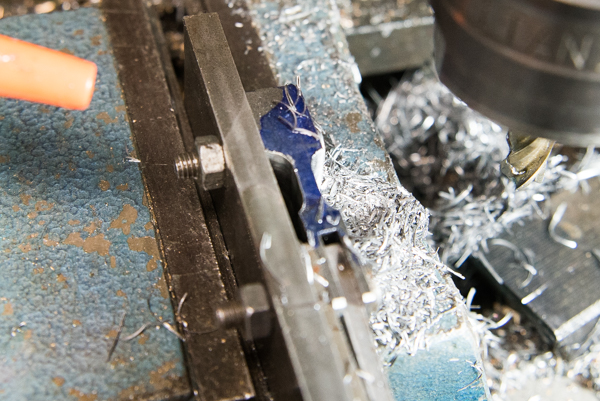 |
| Next comes the rounding of the ends. I had kept a pair of buttons so they were ready to use. | 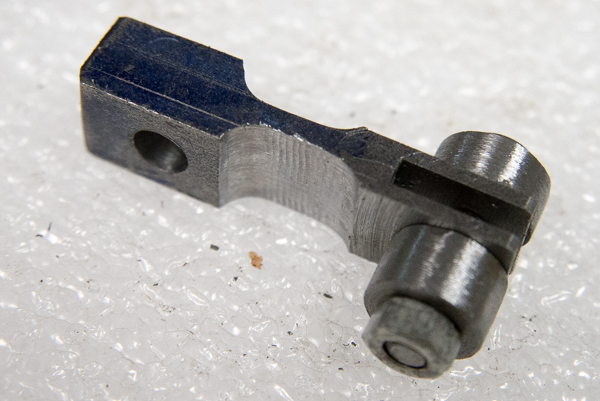 |
| With a mix of filing and
the linisher the job was completed. For the bigger end a new pair of button were made and used in the same way. Finally I used a file to profile away the sharp edges on the bigger end which could be improved if I had a better sent of files ! |
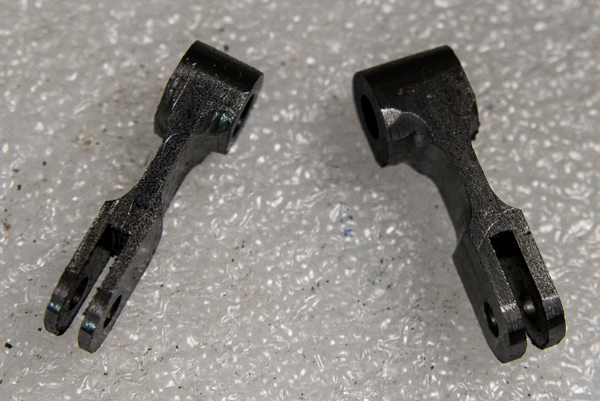 |
| 10th October 2017 Now I need to make the lifting arm actuator extension, the part the is sticking up from those horizontal. |
 |
| I scribed two lines
at each end of the piece of metal and then a cross line at the
dimension required. With the optical punch I was then able to centre pop accurately where I wish to drill and ream. When the piece is prepared then will come the silver soldering to the other part of the lifting arm. |
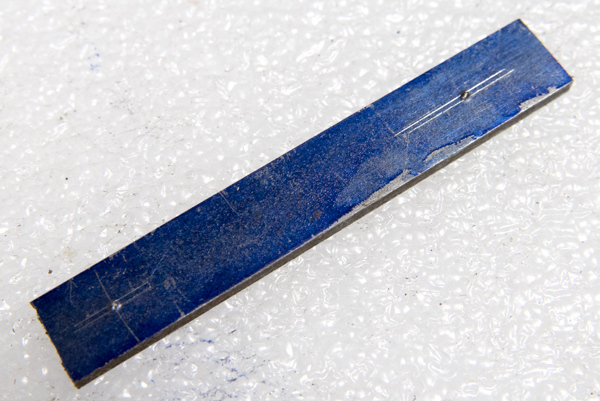 |
| 11th October 2017 So when drilled how am I going to hold the arm to the actuating part ? Well a friend told me that he didnt remember this lever as he did it differently on his Stirling Single and had the three levers fixed separately as he arranged the reach rod to run under the frames instead of over it so his reversing arm pointed downwards in a different position on the shaft. To make the lifting arm as the drawing above he suggested that the two levers were mounted on a small shouldered spigot, say 1 length of 3/8 BMS. Half of it turned down to 1/4 tight fit in the levers to hold them in position while brazing or silver soldering together. If the solder penetrates to the spigot, just hold it in the 3 jaw by the 3/8 part and drill it out 1/4 until the arm falls off the spigot. So that is what I did |
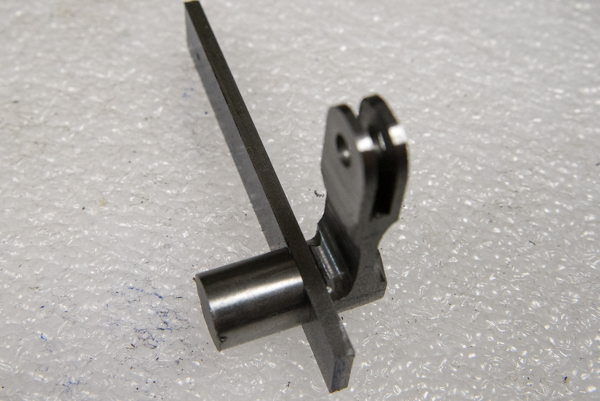 |
| 12th October 2017 Using Tenacity 5 as the flux the parts were silver soldered together and the spigot drilled out. The silver soldering blackened the parts. |
.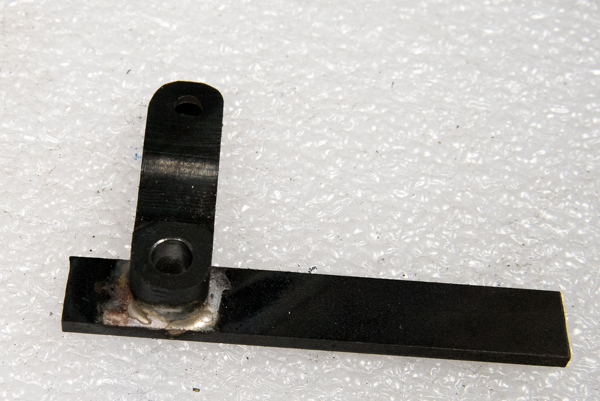 |
| The excess was cut away
and the end rounded using the buttons again |
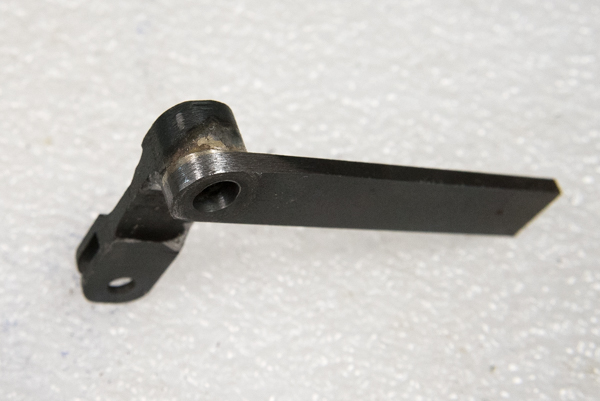 |
| Here is the completed
part cleaned up. All that remains to do is to drill to size the little hole and round the end. |
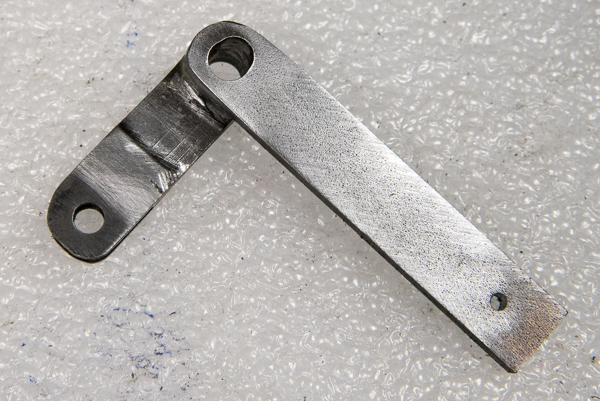 |
| 23 and 24th October This is a very small part and a lot of thought went into how I made it. I decided to make it from a single piece of steel and remove to problems associated with trying to drill two part to rivet onto the expansion link. Also as I wanted to have parts which could be removed I had to work out the sizes from measurement made on the loco. |
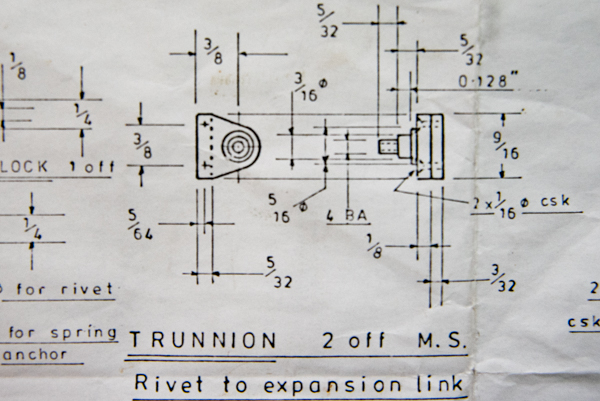 |
| This piece started out as
a piece cut off a round bar and then it was machined down the
the major size below the threaded part. This was then used to hold the part so that it could be machined to thickness required. Then gripping the part on the outer edge the lesser projection were machined and the threading of 4BA applied. |
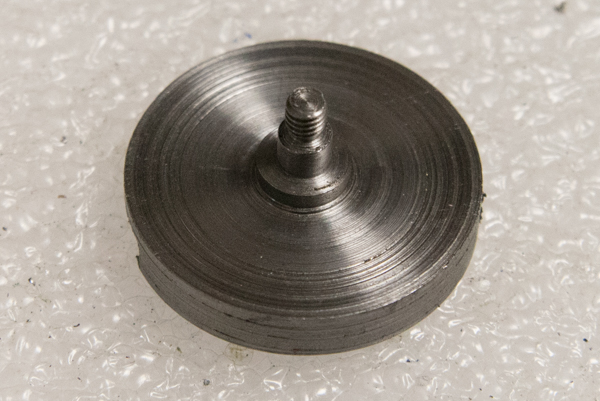 |
| The groove on the back
was machined in the mill with copious amounts of coolant. |
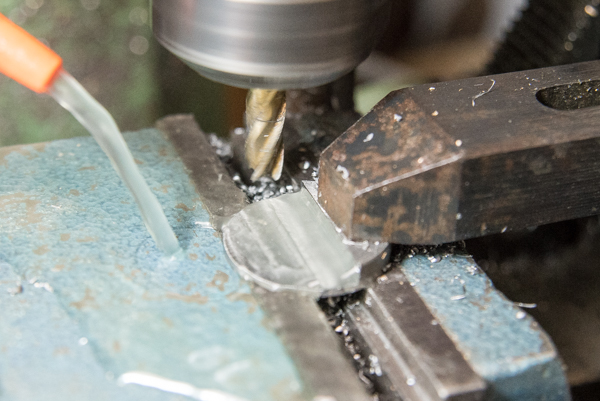 |
| The location of the holes
to be drilled was found by placing the part onto the expansion
link and the using a tool makers clamp the parts held in
registration and holes drill. The copious amounts of filing was carried out to the form shown in the photo. |
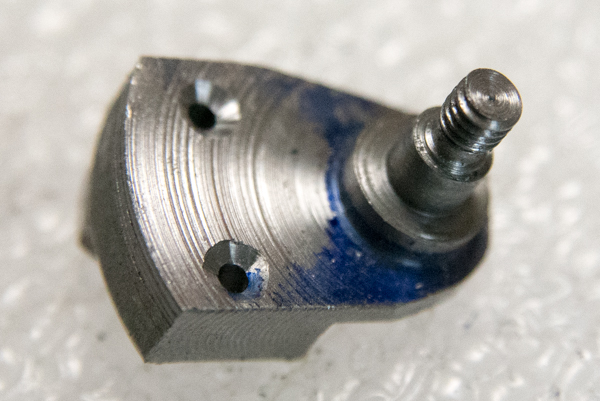 |
| Finally the two parts
were riveted onto the expansion link and the back filed to
profile. These parts are now ready to have spacer washers made and then fitted to the loco. |
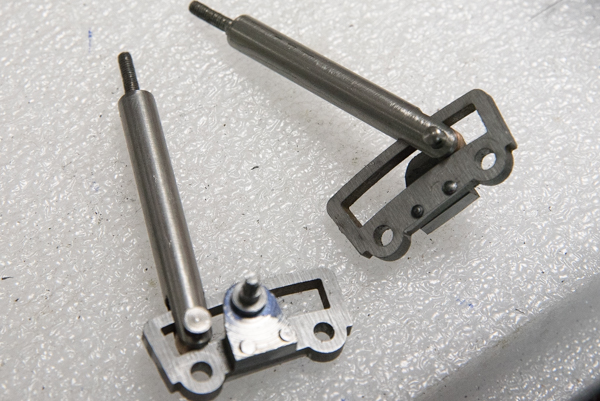 |
| 25th October 2017 To satisfactorily hold the cotter pin in place I machined up a suitable spacer. The split pin is over size but shorter ones are on order . |
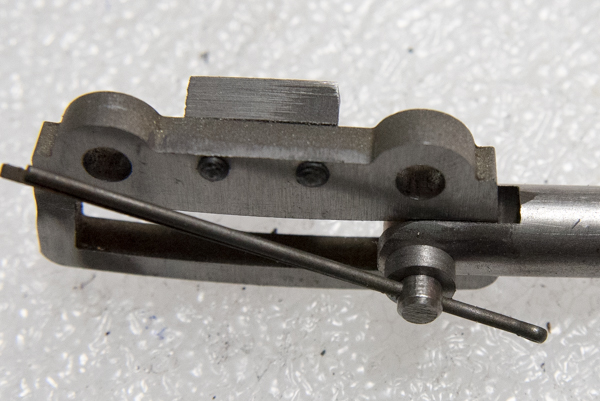 |
| 29th October 2017 More work on the steam chests. The important part to see here is the threaded bolt sticking from the flange. This bolt is just a little longer than the depth of the flange and when fully wound in engages with the steam entry hole in the steam chest. Thus with the location established I was able to clamp the part into position and drill the two M3 tapping holes in the steam chest using the pre-drilled flange as a guide and the drill out the flange to the size of the clearance of an M3bolt. At the moment the flange is held in place by bolts as available by they will be hex bolts in due course. |
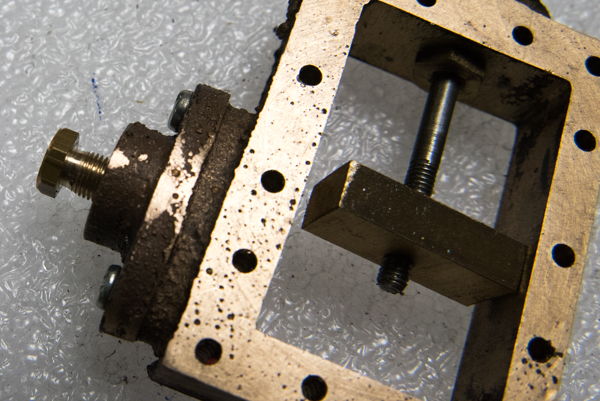 |
| The photo shows the
flange now fitted with some 1/4" pipe and this is threaded
1/4"x40 to mate with the thread in the flange. The slide valve will be changed from steel to a non rusting material so work to be done in that direction! |
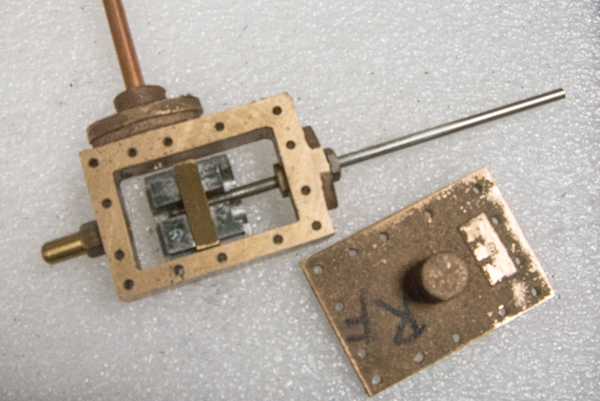 |
| 31st October 2017 The linkage shaft is now installed and I need to work out how the linkage is to be made back to the reverser. |
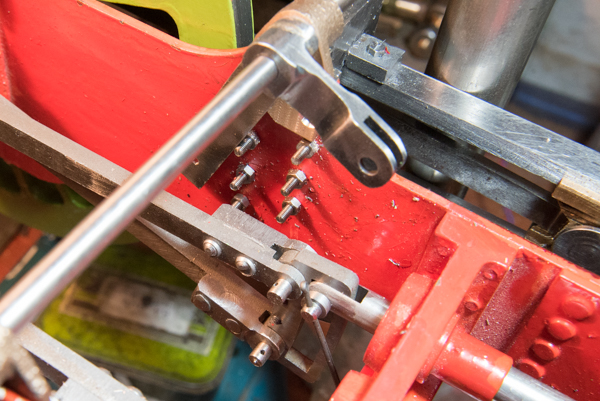 |
| 8th November 2017 To set the reverser a set of small components is required to provide locking in the reverser. the plan shows tat least some of the small parts. To try to ensure that the reach rod moves past the bolts on the inside a bevel was put on the end of the reach rod. |
 |
